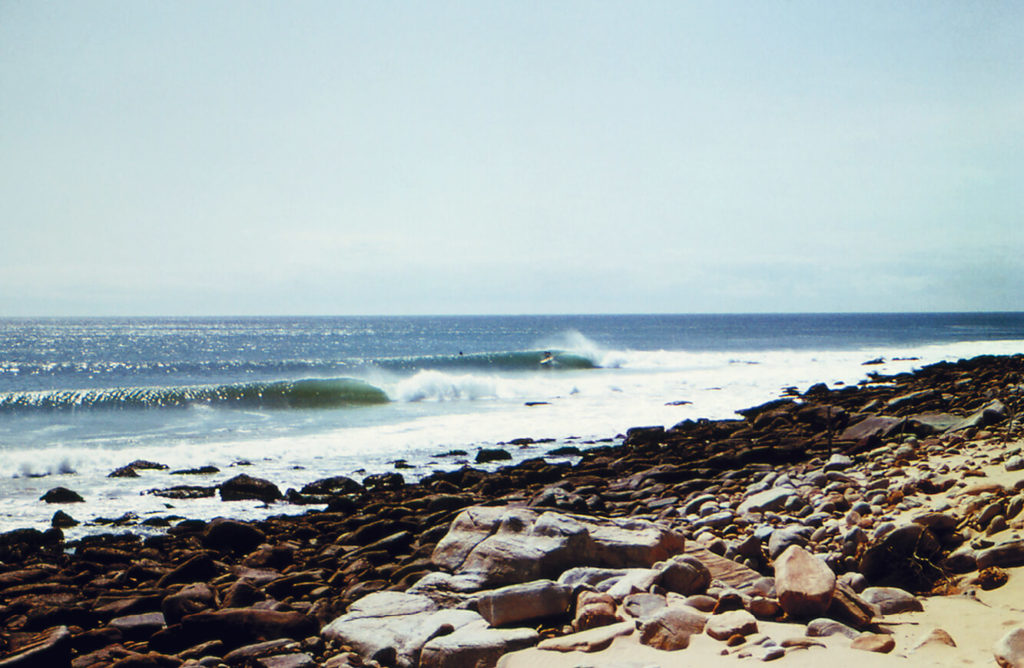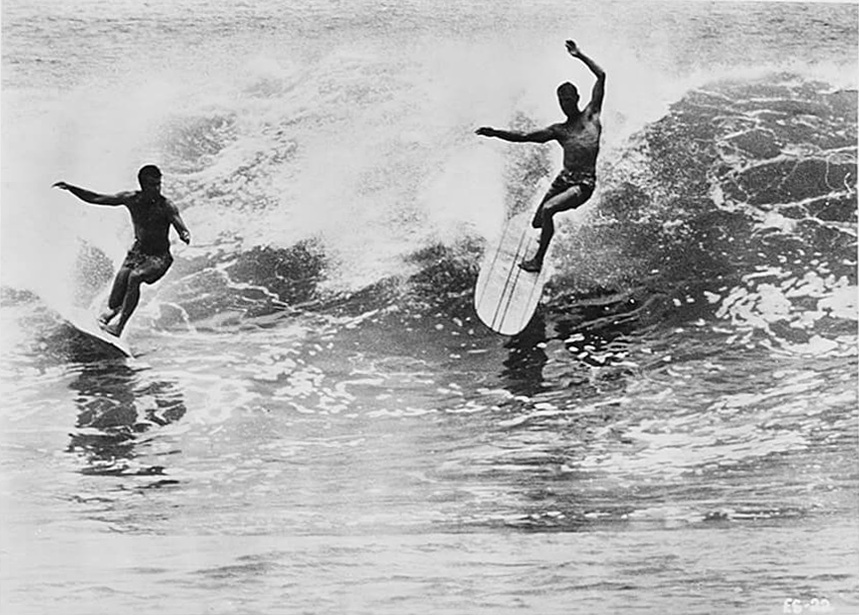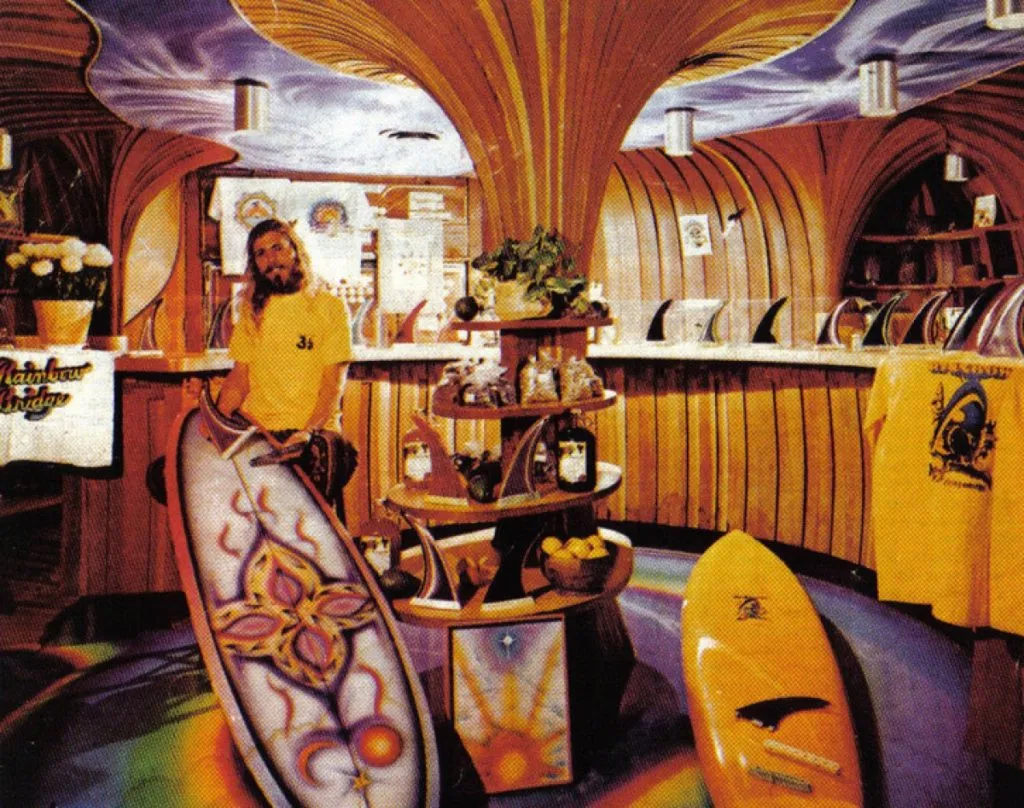It’s the autumn of 1963 and Mike Hynson is sat in a plane seat, sweating and itchy, with sticky tape bound tightly around his torso. As he cranes his neck to peer down the aisle, it occurs to him that his Endless Summer co-star Robert August and the film’s director Bruce Brown are still nowhere to be seen.
A few hours earlier the trio had touched down on a flight from South Africa into what was then known as Bombay, hoping for a quick and easy layover before embarking on the Australian leg of their Endless Summer mission. In theory, it was a simple transfer. They didn’t even need to leave the airport. But in reality, nothing about clearing Bombay customs in the early 60’s was easy, especially when you were dragging several kilos of camera gear and two nine-foot logs along with you.

All of the 16mm film reels containing the fruits of the Endless Summer’s African expedition had already been sent back to America for editing. All, that is, except for the now-seminal Cape St Francis footage. Bruce had immediately sensed the important role it would play in the final piece and not wanting to take any chances, opted to carry with him on the onward journey.
“We knew flying into Bombay that Airport Customs was on a total trip about foreigners filming religious sites or any kind of exposé, for that matter,” writes Hynson in his memoir. “If you brought a camera into the country you could count on losing your film.”
So Brown and Hynson hatched a plan for their most precious reels. Just prior to landing, they would be strapped to Hynson’s torso with sticky tape and concealed under his shirt.
As they’d predicted, the cameras were impounded virtually the minute they touched down and while Brown and August set about trying to sweet-talk the border officials, Hynson breezed straight through security and onto the connecting flight.
After what felt like an age waiting in his seat, he finally spotted August and Brown. Although dishevelled from their dressing down, they informed him that all their gear had made it safely in the hold. As per the plan, Hynson then hot-footed it to the cramped toilet cubicle, peeled the tape off his ribs, tucked the reels inside his jacket and returned to his seat, flush with the buzz from his first-ever successful smuggle.

Half a decade later, as the film packed out cinemas around the world, the tale of that day in Mumbai was about to open a whole new chapter in Hynson’s life.
After a brief stint on Oahu, he’d moved to Laguna Beach, where he’d fallen in with a group of acid-loving spiritualists who called themselves the Brotherhood Of Eternal Love. Many of them had been heroin addicts or violent convicts in a past life, and credited LSD for showing them the way out. They figured perhaps the drug – and the enlightenment it’d brought them – could do the same for the wider American society if only they had access to it. Their aim was to open a psychedelic spiritual and cultural centre in Laguna Beach, where regular folks could come to have their third eye opened. To finance their ambition the group set about establishing what would go on to become America’s largest hash smuggling and acid distribution network.
In his memoir, Hynson recalls the moment he decided he wanted in. He was sitting in a room with a pair of ‘Brothers’ named Johnny and David, smoking a spliff and listening to tales of smuggling and adventure. At first, they were sceptical about getting him on board.
“You could tell he thought I was just a pretty boy and full of shit.” he writes. “[David] said they needed someone with experience. [But] I was not going to let go of this one easily. “I’m not admitting to anything,” I told them, “but traveling through India with Bruce and Robert was where I smuggled the film footage through Customs.” That got their attention. Suddenly they were all ears. Then I winged it and took them through the process of carving out a surfboard with hidden chambers. David even perked up. The Brothers had never thought about using surfboards. Finally, I offered to make a special board for concealing drugs. Hopefully, they would see that I was the guy who could patch and glass a board full of hashish in a hotel room in the middle of Nepal. They must have liked my idea because after a little more discussion David told me I could tag along on his next trip to India.”

A few months later Hynson found himself alone in a stifling hotel room in Delhi, with a spoon from the hotel restaurant in his hand and a stack of three custom made surfboards by his side. He worked long into the night, carefully carving out a series of compartments as foam chips piled up on the floor around him. When he was done, he stuffed in the hash, sealed the boards up with resin and made off for the airport.
In 69’, back in Laguna Beach Hynson teamed up with John Gale, another member of the Brotherhood, an excellent surfer and even more accomplished smuggler, to form Rainbow Surfboards; a custom board building outfit, specialising in performance shortboards painted in jaunty hippy hues and longer sleds with hollowed-out interiors to be used by their friends in the Brotherhood. In what seems, in retrospect, like a strange decision for a global underground smuggling ring they decided to reveal this unique design feature in the 1972 film ‘Rainbow Bridge’ – a strange almost documentary focussing on counter-cultural folk in Maui and culminating with a Jimmi Hendrix concert.
The film’s most notorious scene features Hynson and another man stood underneath a Richard Nixon poster, tearing open a Rainbow Surfboard to reveal a large block of hash.
A few months after its release, a joint task force arrested dozens of members of the Brotherhood, including Hynson’s business partner Gale, who was promptly sent to prison, although not for very long, returning immediately upon his release to his life as a big-time cocaine broker. In ’82, his death in a suspicious car crash sent Hynson into a downward spiral it would take him decades to recover from. Rainbow Surfboards folded, leaving him broke, while his cocaine and meth addictions became all-consuming. For years, he bounced between alley-ways and prison cells. “You know, it just snowballed,” he told the OC Weekly of the period. “I hit rock-bottom, and then stayed there for a while.”
At some point in the late 80s, during a stint in prison, Hynson began scribbling down whatever he could remember from the last few decades. And when he got out, with the help of his partner Carol and his ex-wife, he slowly started to get his life back on track. “One day, I realized I had a driver’s license with my own address and a telephone number. I even had a bank account. That’s when I realized I was back in society again,” he told OC Weekly. In 2011 he published the memoirs he’d started in prison, entitled Mike Hynson—Transcendental Memories of a Surf Rebel and since then, has re-established himself as a board builder, starting up Mike Hynson Surfboards, where he continued to shape until finally hanging up the planer last year.
Despite all the life that’s happened since, he’s still happy to recount the 60-year-old tale of his Cape St Francis find when the occasion calls…

